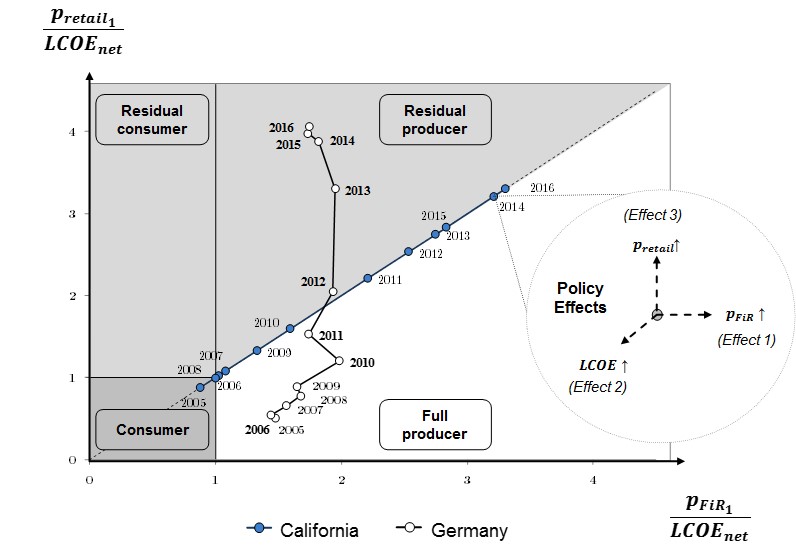How does policy affect the size of residential solar PV systems and what does it mean for the energy transition?
A recently published article sheds light on this question based on a detailed techno-economic simulation and a comparison between two of the leading residential solar PV markets - California and Germany.

If you have been driving through a residential neighbourhood in California or Germany in recent years, you will have noticed the increasing number of rooftop solar PV systems.
At a closer look, you may also have noticed the significant difference in the size of these systems, maybe assuming that these differences are because "it's always sunny in California", as opposed to Germany.
However, external pagean articlecall_made recently published in Energy Policy by SusTec's senior researcher Dr. Jan Ossenbrink reveals that policy has had a key role to play in the sizing of residential solar PV systems. In particular, Ossenbrink shows that the interplay between the predominant feed-in remuneration scheme (such as Net Metering or Feed-in Tariffs), retail electricity prices (such as flat rates or time-of-use rates), and upfront support (such as the Investment Tax Credit) determines the ecomomically optimal (NPV maximizing) system size.
The article stresses that seemingly minor design features of feed-in remuneration schemes have significant implications for the emerging PV prosumer paradigms.
For example, they may set skewed incentives to regard the public grid as an unlimited, free-of-charge storage system and therefore undermine efforts to install and operate solar PV systems installed behind-the-meter in a fashion that is beneficial for the larger electricity system in-front-of-the-meter. Drawing on empirical data from California and Germany, the article further elaborates on these aspects in greater detail.
The research entails important lessons for policy makers amending existing feed-in remuneration policies to account for the rapidly falling costs of residential solar PV systems and their potentially disruptive effects on existing electricity infrastructure especially on the distribution grid level.

